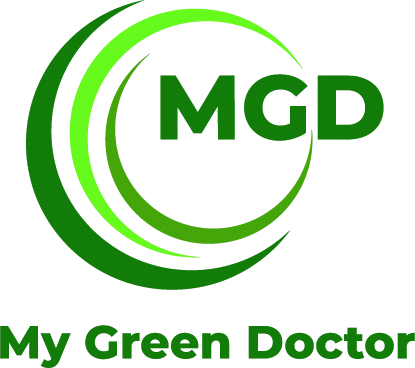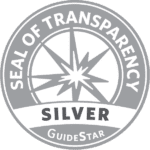Introduction
Renewable energy means cleaner air for your patients and lower greenhouse gas emissions. Renewable energy can mean real profits for your office, and shows your patients that you care about their future.
Renewable energy sources are not generated by burning fossil fuels; they are other forms of power generated from naturally replenished sources that will not be depleted in the coming generations. Examples include solar electric power derived from the sun and hydroelectric power that comes from dams. Other examples include wind power, geothermal power (from geysers and other underground heat sources), tidal power, current power, and biomass (such as burning crops to generate electricity or using crops or agriculture wastes to make vehicle fuel such as ethanol). Using renewable energy means burning fewer fossil fuels and releasing fewer climate-warming greenhouse gasses.
A doctor’s office can install renewable energy systems or can purchase renewable energy credits from local utility companies. An office can teach patients about the benefits of renewable energy and encourage local politicians and utility leaders to increase their investments in renewable power.
Quick Start, Now! Action Steps for Renewable Efficiency
RECs are an easy way to show your commitment to renewable energy, clean air, and community health. More than 850 power companies in the United States allow businesses and individuals to pay a bit more for electricity each month in order to buy renewable energy. Other countries offer similar programs. Learn more about renewable energy credits on the U.S. Environmental Protection Agency website.

Keep Going! More Action Steps for Renewable Energy
Buy “Green Power” from your utility company. This means that you ask your utility company to use your monthly payments to buy electricity generated by renewable technology. Renewable “green power” is more expensive in most markets than power generated from burning fossil fuels. More than 850 regulated US utilities and many in other nations offer “green pricing” programs. Your office might pledge to buy exclusively green power or perhaps start with 20 percent. See the U. S. Environmental Protection Agency website for a map of communities offering this: https://www.epa.gov/greenpower/renewable-energy-certificates-recs
Install a Solar Hot Water System: Solar hot water systems (also called “solar thermal”) typically pay for themselves within 5 years through decreased utility bills, utility company rebates, and tax credits. It works well for doctor’s offices that use hot water in the daytime while the sun shines. After 5 years, your hot water is free! Every unit has a backup heater that uses natural gas or electricity. Contact your local utility for a list of local solar hot water installers.
Solar Hot Water Handout: Create a handout for your waiting room to tell patients about solar hot water heaters. Describe this cost-effective technology, any governmental or utility company rebates available in your community, and the air pollution avoided by using solar hot water. Your utility company or local installer might provide a brochure for you to give to your patients.
Photovoltaic cells convert the solar energy they collect into electrical energy that can be used by buildings. A Photovoltaic system is a series of photosensitive cells organized onto flat solar panels that are mounted on a roof or other support. Your office can install solar panels to utilize the energy from the sun and decrease your demand for energy supplied by the utility company.
Install a Solar Electricity System: Install a solar electricity generating system (photovoltaic solar cell panels) in your home or office. Contact your local electric utility provider to learn the names of vendors in your area. Most vendors will be able to provide you with information regarding tax credits or other incentives available in your community.
Solar Electricity Handout: Create a handout for your waiting room to tell patients about solar electricity and photovoltaic cells. Describe this technology, any governmental or utility company rebates available in your community, the pollution avoided by using solar-powered electricity, and the community health and economic benefits. You may find a brochure provided by your utility or a local solar panel installation company.
Harness Wind Power to Make Energy: Contact your local utility to learn whether your community is suitable for wind-powered electricity generation and obtain a list of local installers. If possible, find a way to use these resources to power your office.
Wind Power Handout: Create a handout for your waiting room to tell patients about wind generation of electricity. Describe this technology, any governmental or utility company rebates available in your community, the pollution avoided by using solar-powered electricity, and the community health and economic benefits.
Contact Your Utility and Local Government: You can write a letter to your local electric utility provider and elected representatives to tell them that renewable energy is valuable for the health and economy of your community. Ask them to inform consumers about renewable energy choices, to increase financial incentives for renewable energy, and to pledge to obtain 20 percent of local electricity from renewable sources by a certain date, such as 2025. You can send a letter that is signed by the office staff, doctors, and patients.
Contact your Local or State Professional Organization: You can write a letter to your local professional societies, nursing, or office management organizations to ask them to support measures to increase renewable energy in your community. You can ask your health professional society to adopt a policy that calls on utilities and government to support renewable energy. Contact My Green Doctor (tsack8@gmail.com) if you would like to receive examples of this type of policy. Your organizations can work with electric utility companies and elected representatives to support renewable energy and better health.
Contact the Mayor or Community Officials: Your office can send a letter to your major or other community officials to ask your city to join 1066 other mayors who by 2020 had signed the U.S. Conference of Mayors’ Climate Protection Agreement, pledging to reduce carbon emissions in their cities below 1990 levels.
There are great jobs and scholarships in the “green economy”— tell your colleagues, patients, and families: For a healthier community and planet, we need for our brightest, most creative people to consider the hundreds of careers available to help the environment. Around the world are university scholarships, fellowships, and great jobs. You can print this paragraph to share it with your families, neighbors, and teachers. Here is an easy-to-read website that explains some of the amazing opportunities: https://www.learnhowtobecome.org/green-careers/
Tips for Success
Here are ways to help guarantee your Green Team’s success:
- For each Action Step that you agree to pursue, have a member of your office or clinic be the Team Leader responsible for reporting your progress on that Step.
- Record the conditions in your office before you start making improvements, such as your monthly electricity use or your office’s monthly greenhouse gas production. Record this data on the Green Team Notes form or in a spreadsheet.
- Establish specific, measurable targets for what you want to accomplish such as, “We will give every patient a brochure about renewable energy options and the community benefits of renewable energy” or “We will install a solar hot water heater in one of our homes this year,” or “We will buy Renewable Energy Credits (RECs) by July 1.”
- Agree on the responsibilities of each person in the office.
- If needed, obtain agreement or approval from the office manager or chief executive.
- Communicate with your office colleagues. Listen for ideas and try to elicit helpful criticism.
- Educate your patients, families & community. Which ideas could be shared with your own families or with your patients? Part of the Green Team is Improvement Plan must include an education plan. Your waiting room can become a site for education.
- Reassess the plan after a reasonable period.
Background Information
- “Most of the recent global warming is very likely due to human-generated increases in greenhouse gas concentrations.” – June 2008, White House Report, President George W. Bush.
- In 1977, President Jimmy Carter put solar panels on the White House and pledged to derive 20 percent of its electricity from renewable sources by 2000; President Reagan dropped this pledge and had the panels removed.
- By 2018, only 13% of US electricity was from renewable generation, the largest part of this from hydroelectric power.
- Carbon dioxide released by the burning of fossil fuels remains in the atmosphere at least 100 years. There is a 30-year time lag between greenhouse gas generation now and the climate impacts.
- Buildings in the US are responsible for using the energy that generates 48% of our greenhouse gases, compared to 27 percent for transportation.
- By 2009, more Americans worked in the wind power industry than in coal mining.
- Wind power from seven states could supply all of America’s electricity needs.
- The solar power industry could provide more than 1 million new American jobs if incentives were created for the solar power industry similar to what is provided now to support the petroleum and coal industries.
- The Federal Government and some states provide generous tax credits for business owners and homeowners who install renewable energy systems.


